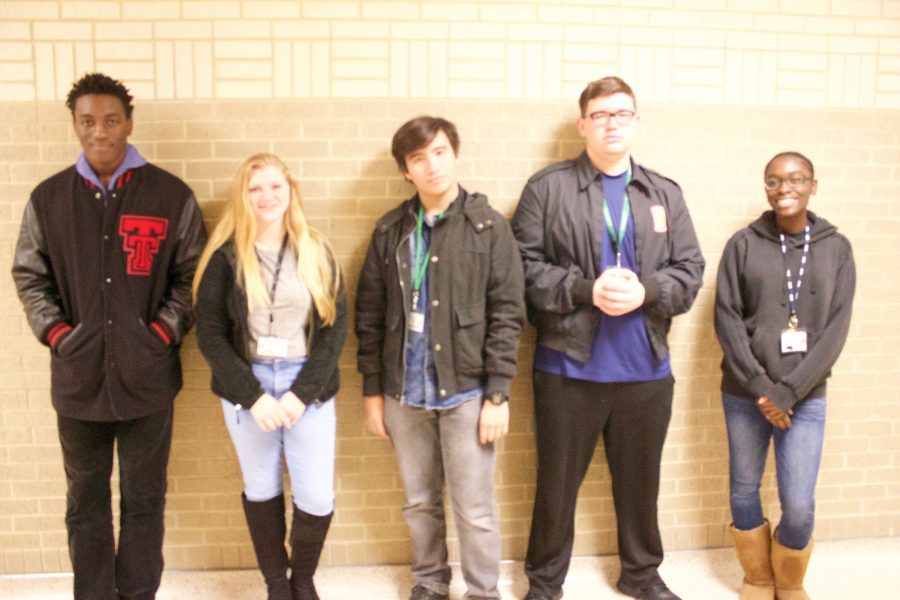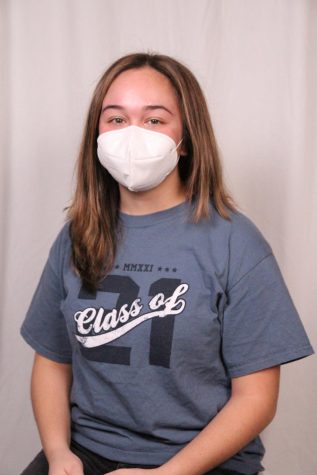The Brain, Athlete, Princess, Basket Case: Which Stereotype Are You?
Students pose showing the variety of the student body.
Anthony Michael Hall’s character in The Breakfast Club explained it in an almost timeless manner: “You see us as a brain, an athlete, a basket case, a princess, and a criminal.” Stereotypes have been an enduring high school issue, prevalent for generations having an immense impact on the lives of students here at Lake Ridge.
Stereotypes are the pre-judgment of a person based on a number of characteristics, such as the color of a person’s skin, the desired attire of a person, who someone chooses to spend their time with, or simply the diction they choose when speaking to others either via text or verbally. High school obviously is where thoughts like these can thrive. For Sarah Brookby, sophomore, high school is like a cheerleader for stereotypes that knows no boundaries.
“I think high school gives a big platform for stereotypes to take place and mold. It places people in groups and labels people almost, in a way, unintentionally, but with much ‘knowledge’ behind it and a great understating of what someone looks like and what they think that person should be,” Brookby said.
In the typical high school movie, the popular kids always seem to be jocks and cheerleaders, and cheerleaders are almost always blonde (occasionally brunette) and usually not the brightest. Smart people are nerds with no social life who love chess. The “bad kids” usually dress in black and have long hair. These are among some of the most common standard and conventionalized images when you think of high school cliques. The designated cliques handed out to the student body by its’ fellow peers can have a damaging effect on the people that make up the student population. Stereotypes have pushed Melanie Perez, junior, to work harder towards her goals so she doesn’t fall into the traps of generalizations.
“The stereotypes are different for everyone. Specifically for me, I know I’ve had to work twice as hard to prove to people that I’m not just a Hispanic that’s going to work in construction. I have brains and I want to be something. I do feel stereotyped; people think I’m not as smart because I’m Hispanic or think that I should speak Spanish when I don’t among other things,” Perez said.
Generalized and oversimplified images of what a person should be have been passed down like hand-me-down clothing for years. It shapes people and makes them more accustomed to a certain way of how things go, and when things don’t go that way, disappointment begins to set in. Sophomore, Zaria Martin, understands first hand the preconceptions that people make up and believe.
“I think I’m stereotyped in many ways, I feel as a black girl, people believe every girl is loud and obnoxious and doesn’t speak correctly, but I feel I’m the complete opposite. I also feel people believe smart people who have good grades don’t have a social life, but I in fact have a great social life and attend outings with friends all the time while still managing a great GPA,” Martin said.
Technology begins to mold a person’s way of thinking and assigns labels to people who look a certain way. With it becoming a more easily accessed tool for people to use in a variety of different ways either for research, entertainment, or social media technology affects the minds of high school students. It also impacts the level of prominence and platform that stereotypes have in high school. Kylie Day, sophomore, believes that social media and technology will force stereotypes to evolve and change into an issue with an even bigger level of importance.
“As technology becomes more ubiquitous and more prevalent in the world around us, social media begins to take wind and negatively affect people which, in turn, will make the stereotypes not go away but instead change and evolve into different groups,” said Day.
Contrary to Day’s opinion, Perez thinks that the generalization of different groups of people will become less paramount, and eventually disintegrate.
“I think stereotypes will decrease. Our generation is very open minded. We have grown up with mixed people and gays and lesbians and it’s normal, whereas in older generations this was unusual and abnormal so it was easy to judge someone different from them,” Perez said.
The images and labels of nerds, athletes and cheerleader, and the ‘different and ‘weird’ people have prompted high schoolers to believe that every single person fits into a single group. But as Hall’s character from The Breakfast Club concludes, “We think you’re crazy to make us write an essay telling you who we think we are. You see us as you want to see us – in the simplest terms, in the most convenient definitions.”


